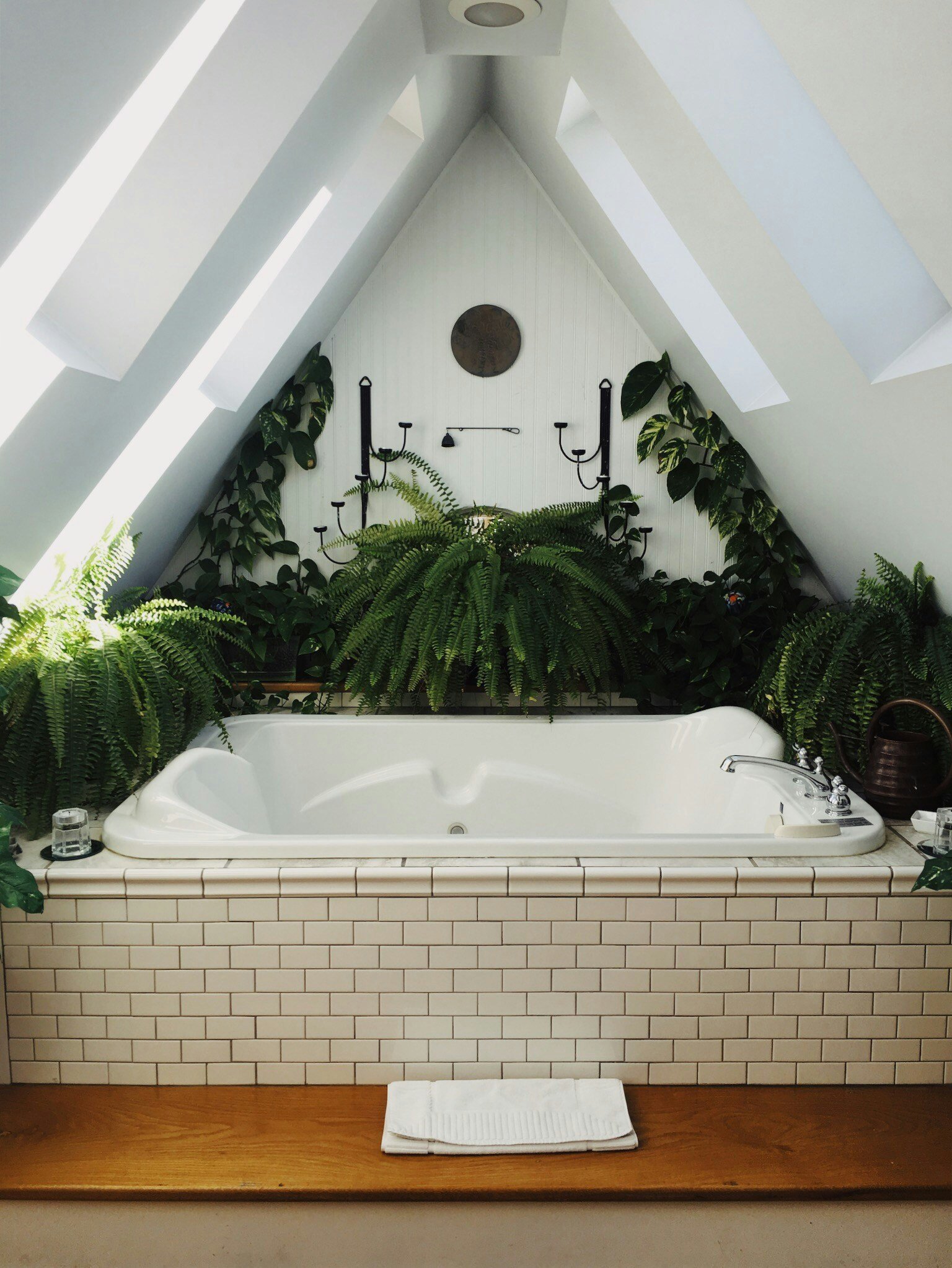Benefits of Biophilic Design
At DesignWell Studios, we understand that your home is more than just a place to live—it’s a vital part of your healing journey. For those living with chronic illness, disability, trauma, or PTSD, the environments around us deeply impact our physical, emotional, and mental well-being. This is where biophilic design becomes a powerful tool for healing.
What Is Biophilic Design?
Biophilic design is an approach that intentionally incorporates elements of nature into built environments. This can include natural light, greenery, water features, natural materials, organic shapes, fresh air, and views of nature. The goal is to reconnect people with the natural world—something our bodies and minds are biologically wired to crave.
Humans evolved surrounded by nature, and modern living often disconnects us from these natural cues. Biophilic design helps restore that connection, promoting calm, reducing stress, and improving overall health.
Why Biophilic Design Matters for Healing
Research shows that exposure to natural elements can:
Reduce stress and anxiety: Natural light and greenery lower cortisol levels (the body’s stress hormone), helping calm the nervous system. This is crucial for people with PTSD or trauma who may experience heightened stress responses.
Support mental clarity and focus: Studies in environmental psychology indicate that nature exposure improves concentration and reduces mental fatigue. This benefits those with chronic illness or brain fog.
Enhance mood and emotional well-being: Being around nature releases endorphins and serotonin, boosting mood and counteracting depression or emotional distress.
Improve sleep quality: Access to natural light during the day and views of nature help regulate circadian rhythms, promoting better sleep—often a challenge for those with chronic health conditions.
Promote physical healing: Elements like fresh air and plants can improve indoor air quality, reducing allergens and irritants that may exacerbate symptoms. Additionally, exposure to natural materials and calming environments supports the body’s restorative processes.
How Biophilic Design Supports People with Chronic Illness, Disability, and Trauma
For people managing complex health issues or trauma, small changes in the environment can make a big difference in daily comfort and resilience. Here’s how:
1. Creating Safe, Nurturing Spaces
Biophilic design fosters environments that feel safe and restorative—key for those with trauma or PTSD. Natural textures and soothing colors can help reduce hypervigilance and create a sense of security.
2. Encouraging Movement and Accessibility
Design that integrates nature also often emphasizes open, flowing layouts and accessible paths, which support mobility and independence for those with disabilities or limited energy.
3. Engaging the Senses Gently
Natural sounds like water or wind chimes, tactile materials like wood or stone, and visual greenery engage the senses without overwhelming them, helping ground and soothe the nervous system.
4. Supporting Immune Function and Reducing Inflammation
Cleaner air, better humidity control, and natural materials can reduce environmental triggers that worsen inflammation or respiratory issues common in chronic illness.
Practical Ways to Bring Biophilic Design Into Your Home
Maximize natural light: Use sheer curtains or window treatments that allow daylight in without glare.
Add plants: Choose low-maintenance indoor plants known for air-purifying qualities (like spider plants, snake plants, or peace lilies).
Use colors that mimic nature like from our color line for AFM SAFECOAT paints!
Use natural materials: Incorporate wood, stone, cotton, or wool in furniture, flooring, and textiles.
Create views of nature: If possible, position seating near windows that overlook greenery or nature. If outdoor views aren’t available, consider nature-inspired art or murals.
Incorporate water features: Small tabletop fountains or aquariums can provide calming sounds.
Bring nature indoors: Use natural scents (essential oils, beeswax candles) and textures that engage the senses gently.
At DesignWell Studios, We Design With Your Healing in Mind
We specialize in creating environments that support your health, resilience, and peace—especially for those navigating chronic illness, disability, trauma, or PTSD. Our science-backed, holistic approach integrates biophilic principles with non-toxic materials, environmental testing, and wellness-driven design tailored to your unique needs.
Ready to transform your home into a healing sanctuary?
Schedule your free consultation today to explore how biophilic design can support your well-being and create a space that truly nurtures your body and mind.
References
Browning, W. D., Ryan, C. O., & Clancy, J. O. (2014). 14 Patterns of Biophilic Design. Terrapin Bright Green.
Ulrich, R. S. (1984). View through a window may influence recovery from surgery. Science, 224(4647), 420-421.
Kellert, S. R., & Calabrese, E. F. (2015). The Practice of Biophilic Design.
Bratman, G. N., et al. (2019). Nature and mental health: An ecosystem service perspective. Science Advances, 5(7).
Van den Bosch, M., & Meyer-Lindenberg, A. (2021). Environmental exposures and depression: biological mechanisms and epidemiological evidence. Annual Review of Public Health, 42, 83-102.



